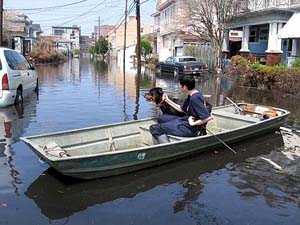 How to prepare your pets for a disaster.Remember Katrina and the thousands of pets left behind, as heartbroken people headed for shelters? Or how about the many people who refused rescue because their pets could not join them?
How to prepare your pets for a disaster.Remember Katrina and the thousands of pets left behind, as heartbroken people headed for shelters? Or how about the many people who refused rescue because their pets could not join them?
I know I didn't remember, because when I heard a presentation by Karen Oberdorfer, Pet Disaster Ambassador, I realized I was disastrously unprepared. Should an earthquake, tsunami or fire hit my home, neither I nor my pet family was at all ready.
It is now time to remedy that! I pledge to Disaster Cats, Bear and Elphia, that I will take the following steps before my next blog:
1. Collar, tag and Micro-chip each pet. I am using the HomeAgain system.
2. Create a Go-Bag for my crew. This waterproof backpack will contain: An extra leash and collar, food and bagged water, a spill proof bowl, a can opener and plastic can lid, litter and a pan, garbage bags and towels, a first aid kit with medical records, medications and micro-chip information, a toy, bed or piece of clothing that smells like me, lights, a current photo of each cat and one with me in it. I will tag the Go-Bag with bold letters and their names and keep it near my front door by their pet carriers. Pre-made packs can be purchased at Berkeley Humane Society. Go to www.berkeleyhumane.org or www.yoursafetyplace.com.
